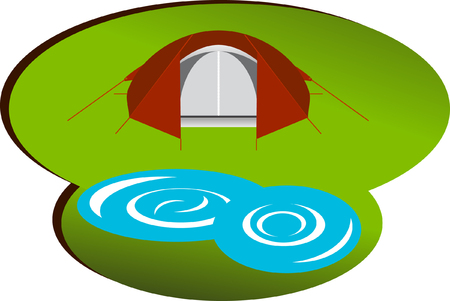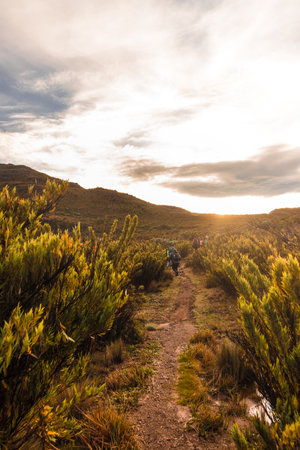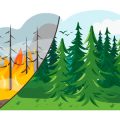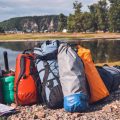1. Introduction to Dispersed Camping
Dispersed camping is a popular way to experience the raw beauty of the American Southwest without the structure—and sometimes the crowds—of developed campgrounds. In simple terms, dispersed camping means setting up camp outside of designated campground areas, typically on public lands managed by agencies like the Bureau of Land Management (BLM) or the U.S. Forest Service.
Why Choose Dispersed Camping?
Outdoor enthusiasts are drawn to dispersed camping for a variety of reasons. It offers a deeper sense of freedom and solitude, allowing campers to connect with nature on their own terms. There are no reservation systems, no campsite numbers, and often, no neighbors. Whether youre parked under the stars in Arizona’s Sonoran Desert or tucked into a quiet canyon in Utah, dispersed camping provides a unique and personal outdoor experience.
Main Differences Between Dispersed and Campground Camping
| Feature | Dispersed Camping | Campground Camping |
|---|---|---|
| Campsite Location | Undeveloped areas on public land | Designated sites within managed campgrounds |
| Amenities | No amenities (no toilets, water, fire rings) | Basic amenities like bathrooms, picnic tables, fire pits |
| Reservations | No reservations required | Often requires advance booking |
| Cost | Usually free | Fees typically apply |
| Crowds | More solitude and space | Can be busy, especially during peak season |
The Appeal in the American Southwest
The American Southwest is uniquely suited for dispersed camping thanks to its vast stretches of public land, dramatic landscapes, and mild weather for much of the year. States like Arizona, New Mexico, Utah, Nevada, and parts of California offer incredible opportunities—from red rock canyons and desert mesas to pine-covered mountain ranges.
This form of camping is perfect for those who want to explore off-the-beaten-path destinations while embracing self-reliance and minimal impact practices. As we dive deeper into this guide, we’ll explore regional highlights and tips that will help you plan your perfect dispersed camping adventure in the Southwest.
2. Essential Gear and Preparation
Dispersed camping in the American Southwest offers wide-open spaces, incredible scenery, and a true sense of freedom. But heading off the grid means you need to be fully prepared. From must-have gear to vehicle readiness, water and food planning, and following Leave No Trace principles—here’s what you need to know before hitting the road.
Must-Have Gear
The remote nature of dispersed camping means you’ll need to bring everything with you. Here’s a breakdown of essential items:
| Category | Essential Items |
|---|---|
| Shelter & Sleep | Tent or rooftop tent, sleeping bag (rated for desert temps), sleeping pad or cot |
| Cooking & Food Storage | Camp stove, fuel, cookware, utensils, cooler or dry food containers |
| Lighting & Power | Headlamps, lanterns, extra batteries, portable power bank or solar charger |
| Navigation & Safety | Paper maps, GPS device or app (offline), first aid kit, multi-tool |
| Personal Essentials | Sunscreen, insect repellent, toiletries (biodegradable), trash bags |
Vehicle Considerations
The Southwest’s terrain varies from sandy washes to rocky forest roads. Your vehicle should match your adventure:
- High-clearance vehicles: A must for many BLM and Forest Service roads.
- 4WD or AWD: Ideal for accessing remote areas or dealing with muddy conditions after rain.
- Tire care: Bring a full-size spare tire, jack, and air compressor. Know how to change a flat.
- Fuel: Gas stations can be far apart—fill up whenever possible and consider carrying an extra gas can.
Water and Food Planning
The desert environment demands careful planning when it comes to hydration and meals.
Water Needs
- Minimum: At least 1 gallon per person per day—for drinking, cooking, and cleaning.
- No natural sources: Don’t expect to find streams or lakes—always bring your own supply.
- Storage: Use jugs or collapsible containers; keep some in your vehicle as backup.
Food Tips
- Shelf-stable options: Canned goods, dried fruits, jerky, trail mix work well in hot weather.
- Easy meals: One-pot recipes and pre-made dishes reduce cleanup time.
- Campsite safety: Store food securely to avoid attracting animals—even in the desert.
Leave No Trace Principles
The beauty of the Southwest depends on responsible campers. Follow these principles to minimize your impact:
- Plan Ahead and Prepare: Know the rules of the land you’re camping on—BLM vs National Forest vs Tribal lands.
- Travel and Camp on Durable Surfaces: Camp on already-used sites or gravel/rocky areas when possible.
- Dispose of Waste Properly: Pack out all trash—including toilet paper. Use wag bags if no restrooms are available.
- Leave What You Find: Don’t take rocks or artifacts. Respect historical sites.
- Minimize Campfire Impact: Use a camp stove instead of fires whenever possible. If fires are allowed, use existing fire rings and fully extinguish them.
- Respect Wildlife: Observe from a distance. Don’t feed animals or leave food scraps behind.
- Be Considerate of Others: Keep noise down and give other campers space—it’s part of the dispersed experience.
A little preparation goes a long way toward making your trip safe, enjoyable, and respectful to the land we all love exploring.

3. Top Regions for Dispersed Camping in the Southwest
The American Southwest is packed with public lands that offer incredible dispersed camping opportunities. From desert landscapes to high mountain forests, there’s something for every kind of camper. Below are some of the best regions for dispersed camping in Arizona, Utah, New Mexico, Nevada, and southwestern Colorado, along with tips on how to access these remote areas.
Arizona
Arizona is a dream for dispersed campers, offering everything from red rock canyons to pine-covered mountains.
Coconino National Forest
Located near Sedona and Flagstaff, this area provides beautiful views and cool pine forests. There are many forest roads where you can set up camp for free.
Access Tip:
Look for Forest Road 525 near Sedona. It’s popular but has plenty of spots if you arrive early or on weekdays.
Kaibab National Forest
This forest surrounds the Grand Canyon and offers quieter alternatives to busy campgrounds.
Access Tip:
The North Rim area tends to be less crowded and has scenic overlooks just steps from your tent.
Utah
Utah is known for its stunning national parks, but there are also countless BLM (Bureau of Land Management) areas perfect for dispersed camping.
Grand Staircase-Escalante National Monument
This massive area offers solitude and jaw-dropping scenery. You’ll find slot canyons, slickrock trails, and wide open spaces.
Access Tip:
Hole-in-the-Rock Road is a popular access point with many side roads leading to great campsites. A high-clearance vehicle is recommended.
Manti-La Sal National Forest
Nestled between Moab and the La Sal Mountains, this spot gives you cooler temperatures and fewer crowds than nearby Arches or Canyonlands National Parks.
Access Tip:
Take La Sal Loop Road from Moab and look for pullouts in the forested areas above 7,000 feet elevation.
New Mexico
New Mexico combines desert beauty with rich cultural history. Many national forests offer peaceful campsites with amazing views.
Carson National Forest
Located near Taos, this area features alpine meadows and access to the Sangre de Cristo Mountains.
Access Tip:
Look for Forest Roads off Highway 64 or near the town of Questa for easy access to scenic sites.
Gila National Forest
This remote region in southwestern New Mexico is full of hot springs, rivers, and rugged mountain terrain.
Access Tip:
The Gila Cliff Dwellings area has several forest roads branching off Highway 15 where you can set up camp by a creek or under tall pines.
Nevada
Nevada’s wide-open spaces are perfect if youre looking for isolation and dark skies for stargazing.
Humboldt-Toiyabe National Forest
This is the largest national forest in the lower 48 states and has multiple sections across Nevada with high-elevation spots ideal for summer camping.
Access Tip:
The Spring Mountains near Las Vegas are easily accessible via Highway 157 and offer cooler temps during hot months.
Southwestern Colorado
This region brings lush forests and rugged peaks together, creating ideal conditions for dispersed camping in summer and early fall.
San Juan National Forest
Around towns like Durango and Silverton, you’ll find numerous forest roads leading to quiet campsites with spectacular mountain views.
Access Tip:
Mineral Creek Road near Silverton is a favorite among vanlifers and tent campers alike. Be prepared for rough roads and sudden weather changes at higher elevations.
Quick Comparison Table
| Region | Main Highlights | Best Access Routes |
|---|---|---|
| Coconino NF (AZ) | Pine forests near Sedona & Flagstaff | FR 525 near Sedona |
| Grand Staircase (UT) | Slickrock & slot canyons | Hole-in-the-Rock Road |
| Carson NF (NM) | Alpine meadows & mountain views | Highway 64 pullouts |
| Spring Mountains (NV) | Cooler temps & close to Las Vegas | Highway 157 access points |
| San Juan NF (CO) | Dramatic peaks & alpine lakes | Mineral Creek Road near Silverton |
No matter which region you choose, always check local regulations before setting up camp. Many areas require that you stay at least 100-200 feet from water sources and pack out all waste. With a little research and preparation, these Southwestern gems can become your go-to spots for unforgettable off-grid adventures.
4. Understanding Land Management and Regulations
When youre planning a dispersed camping trip in the American Southwest, its important to understand who manages the land youre visiting. Different agencies have different rules, and knowing them helps you camp legally and responsibly. Heres a breakdown of the main types of public lands you’ll encounter: BLM lands, National Forests, and Tribal lands.
Bureau of Land Management (BLM) Lands
The Bureau of Land Management oversees vast stretches of open land in the Southwest, especially in states like Arizona, New Mexico, Utah, and Nevada. These lands are popular for dispersed camping because they’re often remote, scenic, and free to use.
Key Points:
- Dispersed camping is generally allowed unless otherwise posted.
- You must camp at least 200 feet away from water sources.
- Stay limits usually range from 14 consecutive days in one location within a 28-day period.
- No amenities—pack out all your trash and waste.
National Forests
National Forests are managed by the U.S. Forest Service and offer both developed campgrounds and opportunities for dispersed camping. Popular areas include parts of Arizona’s Coconino National Forest and New Mexico’s Gila National Forest.
Key Points:
- Dispersed camping is allowed in most areas unless signs say otherwise.
- Camp at least 100 feet from any stream or water source.
- Look for previously used sites to minimize impact.
- Follow fire restrictions closely—these can change quickly due to dry conditions.
Tribal Lands
Tribal lands are sovereign territories managed by Native American tribes. These lands are not public, so you cant camp on them without permission—even if they look remote or undeveloped.
Key Points:
- You must obtain permission or a permit directly from the tribe before entering or camping.
- Cultural sensitivity is essential—respect sacred sites and local customs.
- Laws vary widely between tribes—always check ahead of time.
Comparison Table: Land Management Agencies
| Land Type | Camping Rules | Permit Needed? | Amenities | Stay Limit |
|---|---|---|---|---|
| BLM Land | Generally allowed; follow posted signs | No (unless specified) | No amenities; pack it in, pack it out | 14 days per site per 28-day period |
| National Forest | Allowed in most areas unless restricted | No (in most cases) | No amenities; some nearby developed sites available | Typically 14 days per district rules |
| Tribal Lands | Not allowed without permission | Yes, must contact tribal office | Varies by tribe; often none for dispersed camping | Determined by individual tribes |
How to Find Legal Camping Areas
#1 Use Online Maps and Apps:
- BLM website interactive maps
- USFS forest maps tool
- onX Maps app (paid)
- FreeCampsites.net (user-reported info)
#2 Stop by Ranger Stations:
If youre unsure about where to camp legally, drop by a local BLM field office or National Forest ranger station. Staff can give you up-to-date info on closures, fire bans, and the best places to set up camp.
#3 Watch for Signage:
Lands may have clearly marked boundaries or “No Camping” signs. Always respect posted rules—theyre there for your safety and environmental protection.
The American Southwest offers incredible freedom when it comes to dispersed camping—but with that freedom comes responsibility. By understanding who manages the land and what the rules are, you’ll help protect these wild places for future adventurers while making sure your own trip goes off without a hitch.
5. Safety Tips and Seasonal Considerations
Dispersed camping in the American Southwest can be an unforgettable experience, but it also requires some serious planning to stay safe and comfortable. The region’s unique desert environment comes with its own set of challenges—extreme heat, sudden storms, limited water sources, and remote landscapes. Here’s what you need to know to prepare for your adventure.
Desert Survival Basics
- Water is everything: Always bring more water than you think you’ll need—at least one gallon per person per day, plus extra for emergencies.
- Know where you are: GPS and offline maps are essential. Cell service is often unreliable in remote areas.
- Stay on durable surfaces: Protect fragile desert ecosystems by camping on hard-packed soil or gravel, not vegetation.
- Pace yourself: Avoid strenuous activity during the hottest part of the day (usually between 11 a.m. and 4 p.m.).
Weather-Related Precautions
Monsoon Season (July–September)
The Southwest experiences dramatic summer monsoons that can lead to flash floods, especially in slot canyons and dry washes. Never camp in low-lying areas or near riverbeds during this time. Check local forecasts daily, and always have an escape plan if weather conditions change rapidly.
Heatwaves
Temperatures across the desert can soar above 110°F (43°C) in summer months. Avoid camping in lower elevations like southern Arizona or southeastern California during peak summer unless youre highly experienced and well-prepared.
Cold Nights
Even in summer, high-elevation deserts like those around Flagstaff or northern New Mexico can get chilly at night. Pack layers, including a warm sleeping bag rated for the season.
Best Times to Visit by Region
| Region | Best Time to Camp | Why |
|---|---|---|
| Northern Arizona (e.g., Grand Canyon, Flagstaff) | May–June, September–October | Mild temperatures and fewer crowds; avoid snow season and midsummer heat. |
| Southern Utah (e.g., Moab, Zion area) | April–May, September–October | Pleasant temps for hiking; avoids peak heat and monsoon risk. |
| New Mexico High Desert (e.g., Santa Fe, Taos) | May–June, September–October | Crisp mornings, sunny days; summer storms are less frequent in spring/fall. |
| Southeastern California (e.g., Joshua Tree) | October–April | Avoid extreme heat; cooler months are ideal for exploring and overnight stays. |
| Southeastern Arizona (e.g., Tucson area) | November–March | Mild winter temps make it perfect for desert camping; summers are dangerously hot. |
Final Prep Tips
- Packing essentials: Bring a wide-brim hat, sunscreen, electrolyte drinks, a first aid kit, and plenty of food.
- Vehicle readiness: Make sure your car or truck is in good condition with full tires and extra fuel—many dispersed spots require driving on rough dirt roads.
- Let someone know: Always tell a friend or family member where you’re going and when you expect to return.
With thoughtful preparation and respect for the desert’s power, dispersed camping in the Southwest can be both safe and spectacular.


